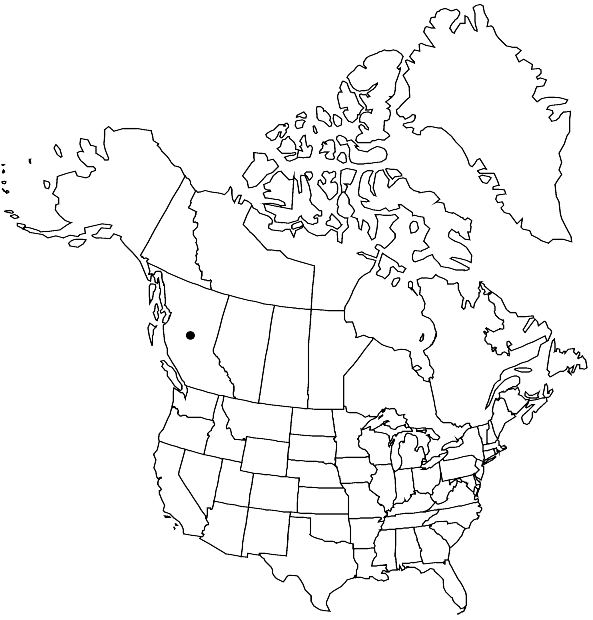Difference between revisions of "Campylopus sinensis"
Ann. Bot. Fenn. 34: 202. 1997,.
FNA>Volume Importer |
FNA>Volume Importer |
(No difference)
| |
Revision as of 21:53, 16 December 2019
Plants to 3 cm, in dense tufts, blackish proximally, golden green distally. Leaves 5–10 mm, the distal ones longest, erect patent when wet, appressed when dry, narrowly lanceolate, long-subulate, ending in a straight, fine, almost entire apex, piliferous at least in the distalmost leaves and plants from exposed habitats, rarely subhyaline; alar cells reddish brown, inflated; basal laminal cells thick-walled, rectangular, narrower at margins, thin-walled in perichaetial leaves; distal laminal cells shortly rectangular or oblique, 3–5:1; costa filling 1/2–3/4 of leaf width, excurrent, in transverse section showing abaxial groups of stereids and adaxial firm-walled hyalocysts, slightly abaxially ridged. Specialized asexual reproduction by deciduous stem tips or deciduous leaves. Sporophytes not known from the flora area.
Habitat: Usually on soil and rocks
Elevation: ca. 60 m
Distribution

B.C., Mexico, Asia (China, Japan, Korea, Vietnam), Pacific Islands (Tahiti), Australia (Queensland).
Discussion
In North America north of Mexico Campylopus sinensis has been found only once, in a depauperate condition in a blanket bog in the Queen Charlotte Islands. The species shows a distinct gradient from large to small plants in the tropical to the subtropical or temperate-oceanic parts of its range in East Asia, which seems to be matched also for the North American populations with regard to specimens from Mexico and from British Columbia. It is not evident whether the record from Queen Charlotte Islands is the result of a long distance dispersal or a relict from the Tertiary, as supposed from some other bryophyte species with amphi-Pacific range or disjunct occurrence in East Asia and Mexico. It is also possible that C. sinensis was hitherto overlooked in North America and (as frequently in China) confused with the similar 3. C. atrovirens (for differences see discussion under the latter species).
Selected References
None.